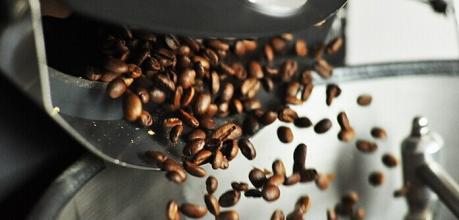Nicaraguan Coffee Manor Tianyi Manor introduces Nicaraguan Coffee Flavor
Watching large and small groups of turtles climb up the reef to bask in the sun is a view by the lake. The shore of Lake Nicaragua is shady with trees, dotted with many red-roofed pavilions, the lake is blue, the lake wind is familiar, waterbirds fly, fish jump out of the water from time to time, and the blue sky, white clouds, water light and lake color constitute a charming scenery. At the beginning of the 21st century, Lake Nicaragua has been on a par with the Masaya volcano and has become two famous landscapes in Nicaragua.
The Great Wall of Nicaragua
The Great Wall of Nicaragua is located 150km west of Managua, the capital of Nicaragua. It used to be a boundary stone for Indian inter-tribal land. At the same time, it also has certain defense functions. There are more than 300 large and small islands in Lake Nicaragua with a total length of 40 km. The smallest island is only a few hundred square meters. The largest island is Ometepe Island, which is 26 km long and 13 km wide and covers an area of more than 300 square kilometers. There are two volcanic cones on the island, one of which is 1610 meters high. There are many historical relics of Mayan culture on the island.
The lake is full of water birds, and the lake is rich in all kinds of saltwater fish, such as crocodiles, sharks, sea turtles and so on. Sharks swim along the San Juan River in the Caribbean, so Lake Nicaragua is prohibited from swimming. Lake Nicaragua is the largest lake in Central America. Located in southwestern Nicaragua. The local Indians call it Lake Corsi Walka, which means "freshwater sea". Lake Nicaragua is 160km long, with an average width of 60km and an area of 8264 square kilometers. Tens of thousands of years ago, Lake Nicaragua was an bay of the Pacific Ocean, cut off from the sea by volcanic eruptions. With the passing of the sun and the moon, the lake gradually diluted and became a freshwater lake. The marine fish that live in the lake also adapt to the desalination of the water and survive. At the beginning of the 21st century, there are still thousands of sharks, swordfish, silver carp and other marine fish in the lake. Lake Nicaragua is said to be the only freshwater lake in the world that breeds marine fish, accounting for 69% of the Nicaraguan population of mixed Indo-European race. The official language is Spanish. Most of the residents are Catholic.
In 1522, Spain began to colonize Nicaragua. On September 15, 1821, Nicaragua got rid of the Spanish colonial shackles and declared its independence. From 1822 to 1823, Nicaragua joined the Mexican Empire. In 1839, the excellent Nicaraguan coffee, which founded the Republic of Nicaragua, is among the highest in the world. It is mild and delicious, moderate granule and very fragrant. In many countries, coffee production has been seriously affected for political reasons. Nicaraguan coffee industry is no exception. The 1979 revolution forced coffee planters to flee to Miami. A period of uncertainty followed, when the government considered whether to redistribute land, including many plantations, which led to a shortage of coffee and a decline in production, from more than 1 million bags in the early 1970s to less than 600000 bags in 1990. Now the government has opened up the coffee industry and private owners have taken control of the market. The best Nicaraguan coffee is grown in the north and middle of the country, and the best coffee is produced in Jinotega and Nuevo Segovia in Matagalpa. The finest Nicaraguan coffee is classified as Middle Estrich Tamant Altura (Central Estrictamendte Altura) coffee, which has moderate acidity, delicious aroma and is very lovable. Coffee beans of poor quality are widely used to mix coffee.

Important Notice :
前街咖啡 FrontStreet Coffee has moved to new addredd:
FrontStreet Coffee Address: 315,Donghua East Road,GuangZhou
Tel:020 38364473
- Prev

The Source of Colombian Coffee introduction to the unique flavor of Colombia
The history of coffee cultivation in Colombia can be traced back to the Spanish colonial era in the 16th century, and there are many theories about the history of coffee in Colombia: one: it is said to come from the island of Haiti in the Caribbean and from El Salvador in Central America. Second: in 1808, a priest introduced coffee beans to Colombia for the first time from the French Antilles via Venezuela. One of them
- Next

Introduction of El Salvador Coffee Flavor Manor with excellent texture
Flavor: balanced taste, excellent texture suggested baking method: medium to deep, there are many uses of high-quality beans: El SHB taste characteristics: sour, bitter, sweet mild and moderate. Salvadoran coffee ranks side by side with Mexico and Guatemala as the producers of Asa and Merdo, and is fighting for the top one or two places in China and the United States with other countries. The highland of origin is equal in size and size.
Related
- Does Rose Summer choose Blue, Green or Red? Detailed explanation of Rose Summer Coffee plots and Classification in Panamanian Jade Manor
- What is the difference between the origin, producing area, processing plant, cooperative and manor of coffee beans?
- How fine does the espresso powder fit? how to grind the espresso?
- Sca coffee roasting degree color card coffee roasting degree 8 roasting color values what do you mean?
- The practice of lattes: how to make lattes at home
- Introduction to Indonesian Fine Coffee beans-- Java Coffee producing area of Indonesian Arabica Coffee
- How much will the flavor of light and medium roasted rose summer be expressed? What baking level is rose summer suitable for?
- Introduction to the characteristics of washing, sun-drying or wet-planing coffee commonly used in Mantenin, Indonesia
- Price characteristics of Arabica Coffee Bean Starbucks introduction to Manning Coffee Bean Taste producing area Variety Manor
- What is the authentic Yega flavor? What are the flavor characteristics of the really excellent Yejasuffi coffee beans?

